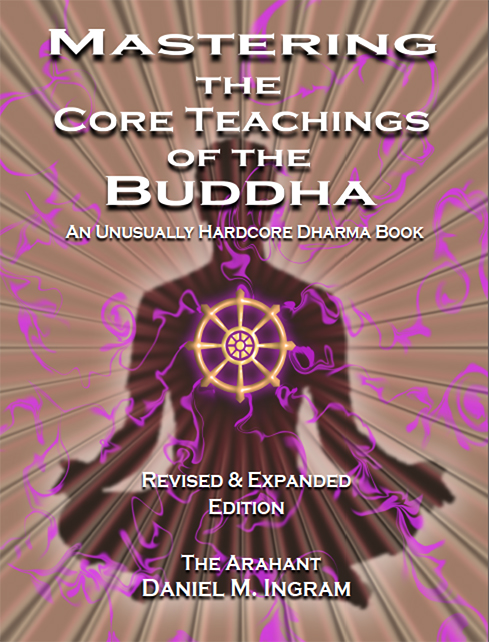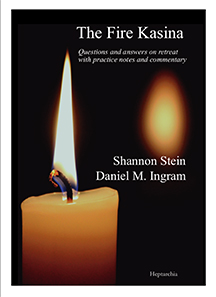15. Postures
← 14. Post-Retreat Advice | 16. Resolve →
The four postures for meditation that are mentioned in traditional Buddhist practice are those of sitting, walking, standing, and reclining. Obviously, people other than Buddhists also assume those postures, so there is nothing particularly Buddhist about them. Each has its own set of benefits and drawbacks, and each may be useful at one time or another. This means that we can meditate in just about any position we find ourselves. We can be aware of where we are, what we are doing, and what our experience feels like all day long. Which posture we choose doesn’t really matter from a pure insight perspective, but there are some practical reasons why we might choose one or another for formal practice. Posture choice is mostly about finding what works in our current circumstances and what matches our current energy level.
Reclining practice has the advantages of being extremely sustainable, not requiring attention to maintain a posture, generally being relatively free from pain, and of allowing the attention to turn to subtle sensations. It has the distinct disadvantage of quickly putting many people to sleep, and thus most people prefer sitting. A few people, such as myself, are so naturally high energy that they can meditate clearly when reclining most of the time and may sometimes find sitting just a bit too intense and edgy. How we will react to the energetic quality of a posture varies with the individual, the phase of practice, and practical considerations such as how much sleep we got the night before, and when we last ate. It usually doesn’t take much experimentation to let us know if reclining will work for us or not.
Sitting is the classic meditation pose, but it is not as special as some would make it out to be. I will use the phrases “on the cushion” and “during a sit” often in this book, but I do so because I find the phrases catchy and not because there is something magical about the sitting posture, or at least not more magical than the other postures. When I write “on the cushion” or “during a sit”, I am referring to formal meditation in any of these four postures.
Sitting has the quality of being more energy-producing than reclining, and less energy-
producing than walking and standing. It can also be very stable once we learn to sit well. However, many people find that learning to sit well is a whole endeavor. There are many postures even within the category of sitting, for example in a chair with our back off the backrest or with our back on the backrest (a totally reasonable option for those with musculoskeletal issues that prevent sitting for long periods of time in other postures), in lotus position, in half-lotus position, sitting “Indian Style” with our legs crossed, in the “Burmese” or “friendly” position which is like the cross-legged position except that our feet are both on the floor one in front of the other, in a kneeling position with or without a bench, etc.
Many traditions, for unique and often valid reasons, make a big deal about exactly how you should sit, with some getting particularly picky about such things. The aspects that seem to matter most are that you can sustain the posture, that your back be fairly straight so that you can breathe well, and that you are not causing permanent damage to your body. Aches and pains are common in meditation, but if they persist for a long time after you get up from sitting, particularly in your knees and back, seriously consider modifying your sitting posture. Don’t underestimate the damage you can do to your body by pushing through too much pain and what is reasonable for your body. At a more advanced level, sitting posture is a whole complex art and science, and it is true that sometimes extremely subtle changes in your sitting posture can produce profound changes in your energetics, awareness, and practice in general. Certain stages of practice can also cause profound changes in how well we sit and how it feels, as will be explained in detail later.
Standing is an even more energy-producing posture than sitting, with the obvious advantage that it is even harder to fall asleep when standing than when sitting. It seems to increase the intensity of a meditation session and can be useful when energy is low. The downside is that standing’s intensity can be too much for some people, with burning in the feet, back pain, shoulder tension, and other discomfort occurring until we get used to it and even sometimes thereafter. I recommend standing with eyes open to avoid falling over, though some people do just fine with eyes closed. If you are sitting and find that you simply cannot stay focused and awake for whatever reason, try standing for a bit. It is much more skillful than falling asleep and snoring in the meditation hall, which happens. A friend of mine who is a tai chi instructor commented, “My main teacher says that everything he learned about tai chi he learned from simply standing.” Standing is an underrated and underutilized posture in most meditative traditions. The subtleties of posture, muscle tone, balance, weight-distribution, and energetics that we may learn about while standing surprises many practitioners unless they already have a background in practices like tai chi.
Walking is the most energetically active of the four postures and provides a nice stretch for the joints and back after much sitting. Its strengths are its weaknesses, in that when we are moving it can be easier to stay present, but that movement can also lead to a lack of stable concentration. Some people consider walking practice to be secondary to sitting, less valid, less “real” meditation, less powerful or effective. I have learned from experience that walking meditation should be given just as much respect as sitting meditation. Whether we walk quickly or slowly is not so important, but rather that while walking we investigate all the little sensations that go into walking. In my own practice, I started out walking very slowly and ended up walking relatively quickly later, but you must find what works for you. In general, in the beginning there is something to be said for slowing down a bit and carefully tuning in to the feet.
Walking is a great time to check out intentions and their relationship to actions, as walking involves a complex and interesting interplay between these. Deconstructing how the sense of a doer is created is directly related to noticing how intentions arise naturally and lead to actions that arise naturally, and this is something that walking teaches well. If you are having problems staying grounded when walking, I recommend focusing primarily on the physical sensations in the feet and legs, particularly the sensations of contact between the soles of the feet and the ground or floor. Really watch it on the turnarounds if you are walking back and forth, and when going through doors if there are doors, as these are times when people tend to space out. Don’t! These moments are excellent for giving rise to insights. I tend to prepare for turnaround about two steps before I get there, ramping up the awareness to not space out, and have found this helps a lot.
Do not underestimate walking meditation. In fact, most people who go on retreats where there is walking practice totally blow it when it comes to the walking, as they don’t think of it as being useful or as powerful as sitting, but in this they err. Walking has so many obvious, clear, strong, complicated, full, rich sensations occurring that it would seem hard to really screw it up. Yet, as the strength of people’s effort at moment-to-moment concentration and investigation can paradoxically fall off in comparison to sitting, this break in the continuity of mindfulness can cause people to regress in their practice and throw away many easy opportunities for insight. Of all the insights I ever had in my whole practice to date, the very most important one happened while walking. Take walking meditation seriously and you will maintain and increase your hard-earned momentum from sitting. Slack off and you will lose momentum and fail to learn all the incredible lessons that walking practice can offer.

